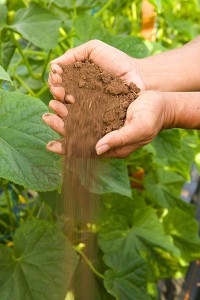This is a guest post by Tim Sissons of William Morfoot, land drainage experts in the UK, who discusses how sustainable farming techniques are better for the environment and can help increase food security levels.
From land drainage to crop rotation. How sustainable farming techniques can help combat food scarcity.
Food security levels
Increasing pressure is being placed on world food supplies as the world population rises. The global population is predicted to almost double in the next 37 years, growing to around 9.2 billion people in 2050.
In 2012 The Food and Agricultural Organisation (FAO) found that one in eight people go to sleep hungry every day and this situation is only expected to become more serious as the population increases.
Other factors which are putting strain on food security levels are increasing energy costs, climate change, rising incomes, inefficient food distribution systems and restricted land availability.
Use of agricultural land is already at capacity – almost three quarters of the world’s possible land is currently used for agricultural production, the quarter that is not used is due to very low productivity or for conservation reasons. It is therefore essential that farmers use the land they have to the best of their ability in the most productive way.
Why sustainable farming?
Agriculture is at the start of the chain. If farmers change their techniques and take on more sustainable methods this gives consumers no choice but to purchase sustainable, environmentally friendly food. This could be as simple as adopting sustainable farming methods or the production of less meat. Meat production is very demanding of cereal and water, to produce 1 kilogram of grain-fed beef it takes on average 10kg of grain and 15000 litres of water. Simply farming less animals could feed more hungry mouths.
Increasing crop yields by using intensive agricultural farming methods such as GM foods, fertilisers and pesticides can harm the environment and also cause health issues. These techniques could also damage future food security by wasting the already limited freshwater supplies, causing soil erosion and polluting the environment with unnatural chemicals. Intense agricultural techniques are also responsible for around 13% of the total greenhouse gas emissions which is directly effecting climate change.
Adopting sustainable methods not only tends to be more accessible on a global level because it is simpler and can be cheaper but it is also an effective way to reliably produce well developed and healthy crops with minimum impact on the environment. Some of the below steps can also be used on a domestic level, ensuring that your garden is more sustainable too.
Seven simple sustainable methods and their benefits:
- Water management – effective land drainage and water managing techniques can vastly improve the quality of soil. Inefficient systems will actually harm soil, wildlife and deplete rivers. Land drainage is also essential for maintaining the quality of soils, as waterlogged crops cannot access the vital nutrients required to reach their full potential.Farmers should aim to grow crops that are native to the particular region as this helps their resilience to the local weather. UN findings show that agriculture uses almost 70% of withdrawn fresh water, so systems that collect and recycle rain water are a great way to help irrigate the land sustainably.
- Soil maintenance – More fertile soils produce better yields. Farmers can keep their soils healthy by using traditional methods such as ploughing and making sure the soil is aired and turned. Adding natural fertilisers like manure or cover crops, and other naturally occurring matter like meal, ash from wood and animal by-products can also improve the soil quality and therefore crop quality.
- Remove weeds by hand – For larger farms this is not always feasible, but not using chemicals to remove weeds can be better for the harvest and the environment. It is also important to mow and graze the soil before the weeds produce seeds- this stops weeds from reproducing and also creates mulch if the weeds are not removed.
- Plant variations – Farmers should aim to plant variations of the same species of crop. By using seeds sourced from many different growers farmers guarantee genetic differences which therefore strengthens the crops. For example, if a particular species of crop could be vulnerable to a certain pest but not the others meaning a good deal of crop will survive.
- Sell crops locally – A lot of pollution and unnecessary energy consumption is caused by the transportation, packaging and storage of crops. Selling locally not only helps reduce the carbon footprint but can also help enrich the community, show a faster turnover and also boost the local economy.
- Attract crop friendly animals – An effective way of deterring the harmful beasts that threaten the crops is welcoming their natural predators. Some farmers build shelters to house the nests of birds and bats and others even buy helpful insects like ladybirds, to feed on the pests.
- Crop rotation – A very old system that helps maintain the quality of the soil by replenishing the nutrients that the previous crops depleted. It can also stop the spread of disease and eradicate pests which were specific to the previous crop.
Photo credit: Scott Bauer, USDA Natural Resources Conservation Service
